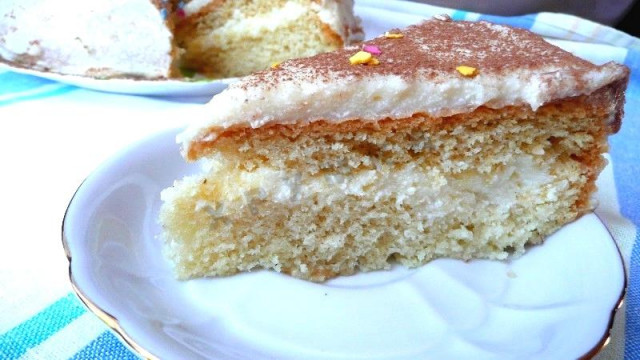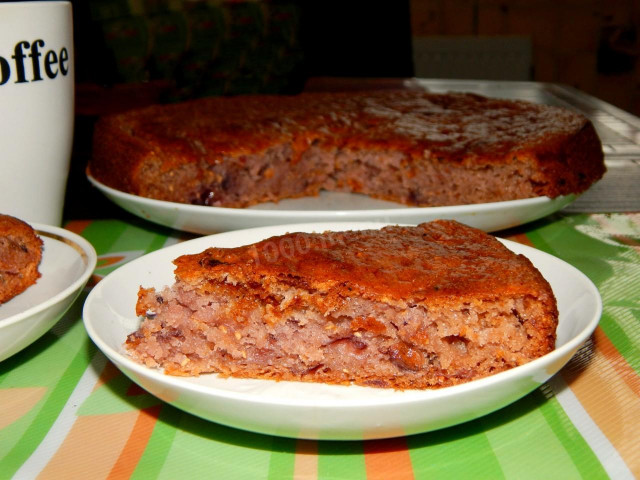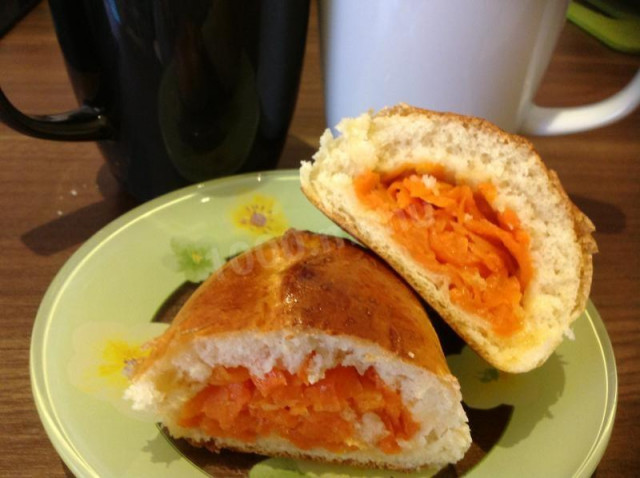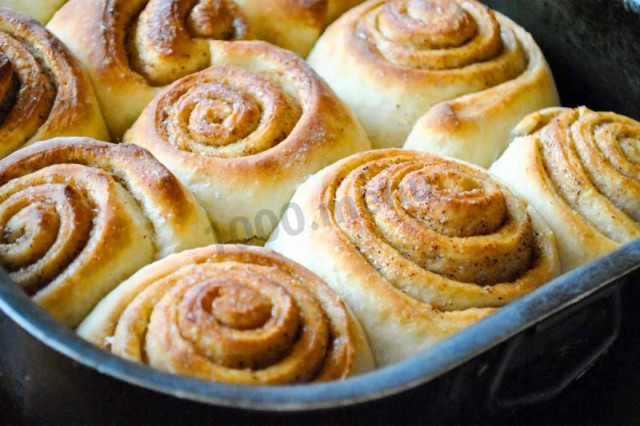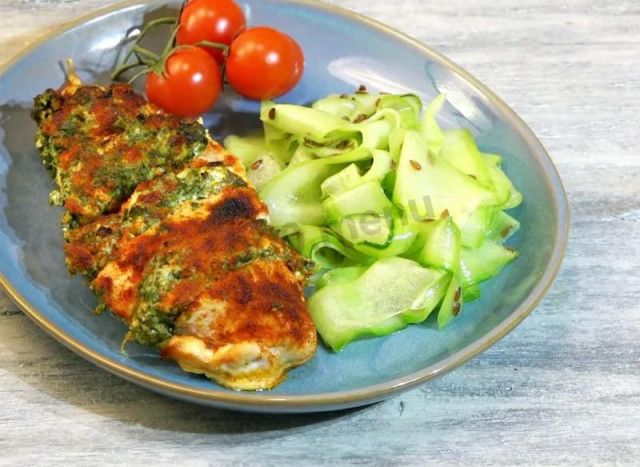Composition / ingredients
Step-by-step cooking
Step 1:

Biscuit products. Since we make a classic sponge cake without using baking powder, the eggs should be fresh, at room temperature.
Step 2:

Beat eggs with sugar.
Step 3:

The rise of baking depends more on the eggs, beat them especially carefully, in a clean bowl, until the volume increases and the mass is compacted. Then, fill the flour in portions, mix with a mixer. The dough should not be thick or liquid. The consistency resembles unsweetened honey, or fatty sour cream.
Step 4:
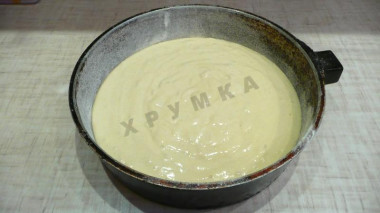
Form, I have a thick-walled aluminum frying pan with high sides, lubricate with oil and sprinkle with flour. Pour the dough into the mold. We put it in a preheated oven, bake for 30 minutes at a temperature of 200 degrees, then reduce the heat to 180 degrees and keep the remaining 30 minutes in the oven. We check the readiness with a wooden stick. In my gas oven with this mode, the biscuit rises and is baked well. But since the ovens are all different, focus on your own.
Step 5:
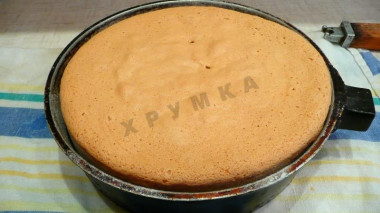
Take out the finished biscuit, put it on a wet towel for a few minutes (it will be easier to pull it out). Shake it out on a paper towel, let it cool down
Step 6:
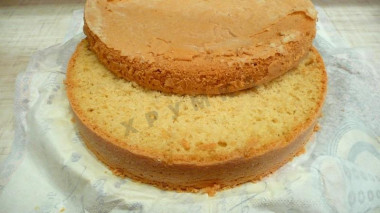
Cut the cooled biscuit. We get 2 cakes
Step 7:

Cream and Impregnation Products
Step 8:
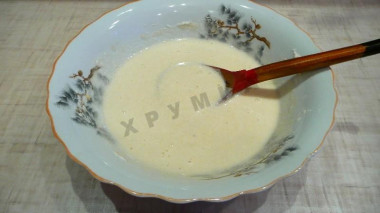
To make the cream, grind the egg, sugar and flour.
Step 9:
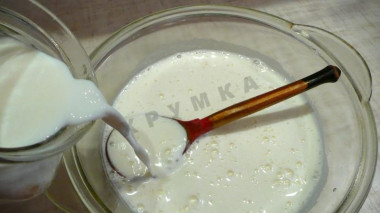
Put the mixture in a thick-walled saucepan and pour the milk. Stir until the lumps dissolve. Put on a slow fire and cook, stirring constantly until boiling.
Step 10:

Cool the finished cream.
Step 11:

If oil is not added to the custard, then when the cake is soaked, the cream has the property of "cracking" on the product, this is due to the fact that moisture is absorbed into the sponge cake and the dessert becomes untidy. Therefore, it is better to add a small piece of soft (room temperature) butter and beat.
Step 12:

For the preparation of impregnation: We cook sugar with water, add lemon vodka to this mixture. The impregnation is ready
Step 13:
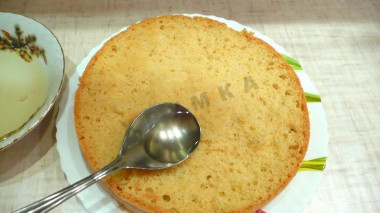
Impregnate the bottom cake with impregnation
Step 14:

We smear the cream, put the second cake on top and coat the cake with cream.
Step 15:
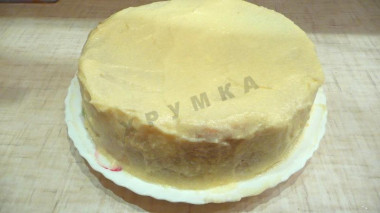
Leave the cake to soak in the refrigerator for 4-5 hours.
Step 16:
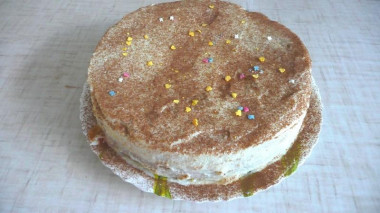
Sprinkle the finished cake with a mixture of cocoa powder and ground cinnamon.
Step 17:
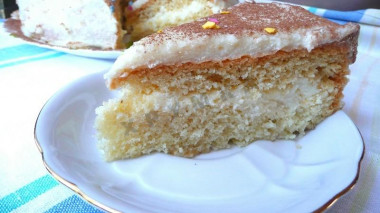
Cut into portions
Be prepared for the fact that flour may need more or less than indicated in the recipe. You need to focus on how the dough should turn out (dense, soft, liquid, etc.). A lot of useful information about why flour of the same variety may have different properties, read this article
Keep in mind that everyone's ovens are different. The temperature and cooking time may differ from those specified in the recipe. To make any baked dish successful, use useful information in the article about ovens here
There are a lot of recipes for sponge cakes, even on the website there is a "Sponge cake with custard", but a sponge cake prepared according to a classic recipe is very different from a homemade sponge cake. I have seen this personally and I can speak with firm confidence.
The main difficulty in baking this biscuit is in the oven, as it is necessary to withstand the temperature regime. There is an option to switch to a slow cooker, where you can observe the temperature regime for a biscuit, but it must be borne in mind that the dough itself is so tender that when baking it, you should not rumble in the kitchen, stomp, drop pots... It may seem ridiculous, but it really affects and the biscuit can settle.
I also want to say a few words about impregnation, it's worth impregnating a biscuit, it gives the dessert special flavor notes. You can use cognac, rum, and if you categorically reject alcohol, then fruit syrups.
The son, almost alone, "swept away" the cake instantly.
Caloric content of the products possible in the composition of the dish
- Whole cow's milk - 68 kcal/100g
- Milk 3.5% fat content - 64 kcal/100g
- Milk 3.2% fat content - 60 kcal/100g
- Milk 1.5% fat content - 47 kcal/100g
- Concentrated milk 7.5% fat content - 140 kcal/100g
- Milk 2.5% fat content - 54 kcal/100g
- Chicken egg - 157 kcal/100g
- Egg white - 45 kcal/100g
- Egg powder - 542 kcal/100g
- Egg yolk - 352 kcal/100g
- Ostrich egg - 118 kcal/100g
- Whole durum wheat flour fortified - 333 kcal/100g
- Whole durum wheat flour, universal - 364 kcal/100g
- Flour krupchatka - 348 kcal/100g
- Flour - 325 kcal/100g
- Granulated sugar - 398 kcal/100g
- Sugar - 398 kcal/100g
- Butter 82% - 734 kcal/100g
- Amateur unsalted butter - 709 kcal/100g
- Unsalted peasant butter - 661 kcal/100g
- Peasant salted butter - 652 kcal/100g
- Melted butter - 869 kcal/100g
- Water - 0 kcal/100g
- Wheat flour - 325 kcal/100g
- Chicken egg - 80 kcal/100g

